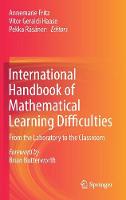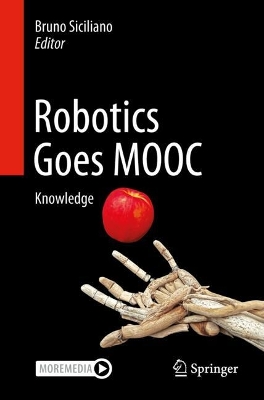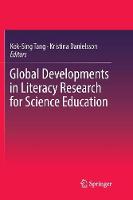International Handbook of Mathematical Learning Difficulties
 -15%
portes grátis
-15%
portes grátis
International Handbook of Mathematical Learning Difficulties
From the Laboratory to the Classroom
Raesaenen, Pekka; Haase, Vitor Geraldi; Fritz, Annemarie
Springer International Publishing AG
02/2019
843
Dura
Inglês
9783319971476
15 a 20 dias
1460
Descrição não disponível.
Part I. Development of number understanding: different theoretical perspectives.- Chapter 1. Neurocognitive perspective on numerical development.- Chapter 2. Everyday context and mathematics learning: on the role on spontaneous mathematical focusing tendencies in the development of numeracy.- Chapter 3. Competence Models as a Basis for Defining, Understanding, and Diagnosing Students' Mathematical Competences.- Chapter 4. Mathematical performance amongst the poor: Comparative performance across developing countries.- Chapter 5. Didactics as source and remedy of mathematics learning difficulties.- Chapter 6. Development of number understanding: different theoretical perspectives.- Part II. Mathematics learning and its difficulties around the world.- Chapter 7. Special needs education in mathematics: The case of Nordic countries.- Chapter 8. Math learning and its difficulties in the Middle European countries.- Chapter 9. Mathematics learning and its difficulties in Eastern European countries.- Chapter 10. Maths Learning and its Difficulties in Southern European Countries.- Chapter 11. Mathematics Learning Difficulties in the United States: Current Issues in Screening and Intervention.- Chapter 12. Latin-American Countries.- Chapter 13. Mathematics Learning and its difficulties: the cases of Chile and Uruguay.- chapter 14. Mathematical inclusion in Southern Africa.- Chapter 15. Math Learning Difficulties in Australia.- Chapter 16. Mathematical learning and the difficulties in Taiwan: insights from educational practice.- Chapter 17. Maths Learning and its Difficulties in Israel.- Chapter 18. Learning Difficulties and Disabilities in Mathematics: Indian Scenario.- Chapter 19. Discussion of Section 2: Math learning difficulties around the world.- Part III. Mathematical learning difficulties and its cognitive, motivational and emotional underpinnings.- Chapter 20. Neurobiological origins of mathematical learning disabilities or dyscalculia:.- A review of brain imaging data.- chapter 21. Genetics of Dyscalculia 1: In search of genes.- Chapter 22. Genetics of dyscalculia 2: In search of endophenotypes.- Chapter 23. Comorbidity and differential diagnosis of dyscalculia and ADHD.- Chapter 24.- Working memory and mathematical learning.- Chapter 25. The relation between spatial reasoning and mathematics achievement in children with mathematics learning difficulties.- Chapter 26. The language dimension of mathematical difficulties.- Chapter 27. Motivational and math anxiety perspective for mathematical learning and learning difficulties.- Chapter 28. Math & Emotions: The Case of Math Anxiety.- Chapter 29. Cognitive and Motivational Underpinnings of Mathematical Learning Difficulties: A Discussion.- Part IV.Understanding the basics: building conceptual knowledge and characterizing obstacles to the development of arithmetic skills.- Chapter 30. Counting and Basic Numerical Skills.- Chapter 31. Multi-digit Addition, Subtraction, Multiplication, and Division Strategies.- Chapter 32.Development of a sustainable place value understanding.- Chapter 33. Using Schema-Based Instruction to Improve Students' Mathematical Word Problem Solving Performance .- Chapter 34. Geometry.- Chapter 35. Understanding Rational Numbers - Obstacles for Learners With and Without Mathematical Learning Difficulties.- Part V. Understanding Rational Numbers - Obstacles for Learners With and Without Mathematical Learning Difficulties.- Chapter 36. Assessing mathematical competence and performance: Quality characteristics, approaches, and research trends.- Chapter 37. Diagnostics of dyscalculia.- Chapter 38. Three Frameworks for Assessing Responsiveness to Instruction.- Chapter 39. Technology-based diagnostic assessments for identifying early learning difficulties in mathematics.- Chapter 40. Technology-based diagnostic assessments for identifying early learning difficulties in mathematics.- Chapter 41. Perspectives to technology-enhanced-learning and teaching in mathematical learning difficulties .- Chapter 42. Executive Function and Early Math Learning Difficulties.- Chapter 43 Children's mathematical difficulties: some contributory factors and interventions.- Chapter 44. Beyond the "third method" for the assessment of developmental dyscalculia. Implications for research and practice.- Chapter 45. Challenges and future perspectives.
Este título pertence ao(s) assunto(s) indicados(s). Para ver outros títulos clique no assunto desejado.
Mathematics learning difficulties;Mathematics education;Numerical cognition;Mathematics learning disabilities;Dyscalculia;Mathematics learning assessment;Mathematics interventions;Numeracy;Language and mathematics;Developmental disabilities;School achievement;Number sense;Math anxiety;Symbolic number processing;Non symbolic processing;Arithmetic skills;Mathematics education around the world;Aproximate number system;Computer based assessments;Computer based interventions
Part I. Development of number understanding: different theoretical perspectives.- Chapter 1. Neurocognitive perspective on numerical development.- Chapter 2. Everyday context and mathematics learning: on the role on spontaneous mathematical focusing tendencies in the development of numeracy.- Chapter 3. Competence Models as a Basis for Defining, Understanding, and Diagnosing Students' Mathematical Competences.- Chapter 4. Mathematical performance amongst the poor: Comparative performance across developing countries.- Chapter 5. Didactics as source and remedy of mathematics learning difficulties.- Chapter 6. Development of number understanding: different theoretical perspectives.- Part II. Mathematics learning and its difficulties around the world.- Chapter 7. Special needs education in mathematics: The case of Nordic countries.- Chapter 8. Math learning and its difficulties in the Middle European countries.- Chapter 9. Mathematics learning and its difficulties in Eastern European countries.- Chapter 10. Maths Learning and its Difficulties in Southern European Countries.- Chapter 11. Mathematics Learning Difficulties in the United States: Current Issues in Screening and Intervention.- Chapter 12. Latin-American Countries.- Chapter 13. Mathematics Learning and its difficulties: the cases of Chile and Uruguay.- chapter 14. Mathematical inclusion in Southern Africa.- Chapter 15. Math Learning Difficulties in Australia.- Chapter 16. Mathematical learning and the difficulties in Taiwan: insights from educational practice.- Chapter 17. Maths Learning and its Difficulties in Israel.- Chapter 18. Learning Difficulties and Disabilities in Mathematics: Indian Scenario.- Chapter 19. Discussion of Section 2: Math learning difficulties around the world.- Part III. Mathematical learning difficulties and its cognitive, motivational and emotional underpinnings.- Chapter 20. Neurobiological origins of mathematical learning disabilities or dyscalculia:.- A review of brain imaging data.- chapter 21. Genetics of Dyscalculia 1: In search of genes.- Chapter 22. Genetics of dyscalculia 2: In search of endophenotypes.- Chapter 23. Comorbidity and differential diagnosis of dyscalculia and ADHD.- Chapter 24.- Working memory and mathematical learning.- Chapter 25. The relation between spatial reasoning and mathematics achievement in children with mathematics learning difficulties.- Chapter 26. The language dimension of mathematical difficulties.- Chapter 27. Motivational and math anxiety perspective for mathematical learning and learning difficulties.- Chapter 28. Math & Emotions: The Case of Math Anxiety.- Chapter 29. Cognitive and Motivational Underpinnings of Mathematical Learning Difficulties: A Discussion.- Part IV.Understanding the basics: building conceptual knowledge and characterizing obstacles to the development of arithmetic skills.- Chapter 30. Counting and Basic Numerical Skills.- Chapter 31. Multi-digit Addition, Subtraction, Multiplication, and Division Strategies.- Chapter 32.Development of a sustainable place value understanding.- Chapter 33. Using Schema-Based Instruction to Improve Students' Mathematical Word Problem Solving Performance .- Chapter 34. Geometry.- Chapter 35. Understanding Rational Numbers - Obstacles for Learners With and Without Mathematical Learning Difficulties.- Part V. Understanding Rational Numbers - Obstacles for Learners With and Without Mathematical Learning Difficulties.- Chapter 36. Assessing mathematical competence and performance: Quality characteristics, approaches, and research trends.- Chapter 37. Diagnostics of dyscalculia.- Chapter 38. Three Frameworks for Assessing Responsiveness to Instruction.- Chapter 39. Technology-based diagnostic assessments for identifying early learning difficulties in mathematics.- Chapter 40. Technology-based diagnostic assessments for identifying early learning difficulties in mathematics.- Chapter 41. Perspectives to technology-enhanced-learning and teaching in mathematical learning difficulties .- Chapter 42. Executive Function and Early Math Learning Difficulties.- Chapter 43 Children's mathematical difficulties: some contributory factors and interventions.- Chapter 44. Beyond the "third method" for the assessment of developmental dyscalculia. Implications for research and practice.- Chapter 45. Challenges and future perspectives.
Este título pertence ao(s) assunto(s) indicados(s). Para ver outros títulos clique no assunto desejado.
Mathematics learning difficulties;Mathematics education;Numerical cognition;Mathematics learning disabilities;Dyscalculia;Mathematics learning assessment;Mathematics interventions;Numeracy;Language and mathematics;Developmental disabilities;School achievement;Number sense;Math anxiety;Symbolic number processing;Non symbolic processing;Arithmetic skills;Mathematics education around the world;Aproximate number system;Computer based assessments;Computer based interventions







